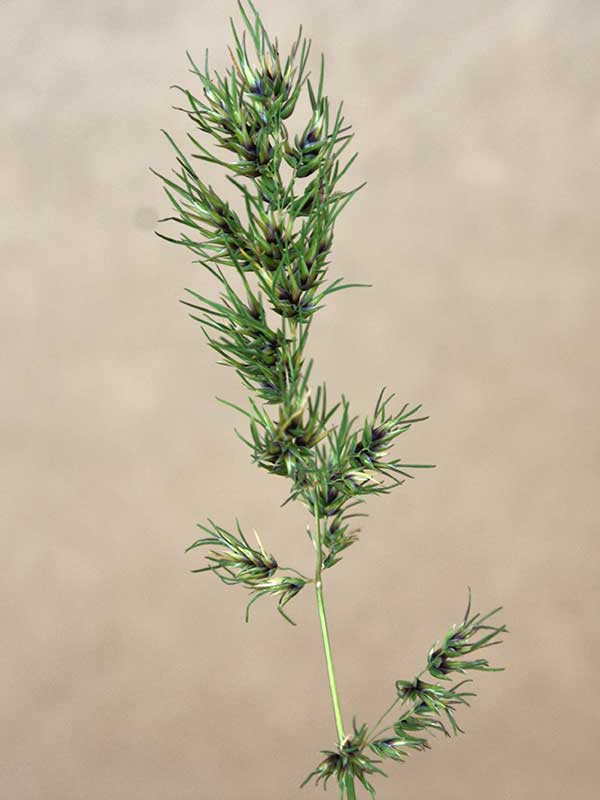Poa bulbosa / bulbous meadow-grass
- short, tuft-forming grass
- funny-looking flower stalks… having bulblets instead of florets
- doesn’t produce pollen or seeds
Also known as: bulbous bluegrass
Note: grasses have a nomenclature all their own, much different from that of dicots. A good resource/slide show from the University of Idaho on grass structures is available here.
Bulbous meadow-grass is an Introduced species from Asia, Europe, North Africa. It came to North America originally as a contaminant in alfalfa seed in the 1890s, but was later specifically planted on both the east and west coasts. At this point, it is more common in the West than the East as an established species.
Bulbous meadow-grass is found in all the usual suspect areas… disturbed sites, roadsides, and abandoned fields. On some sites and in some environments, it is annual, but otherwise it is considered a short-lived perennial, or an annual with “perennial tendencies”. One of the problems in deciding all this is that by mid- summer, the plants have gone dormant, with both the leaves and roots having died back. Growing all new roots every year has some fitness costs. And when they do grow these roots, there are only a few for each basal bulb, and they are only 4 inches or less long.
Bulbous meadow-grass is “bulbous” in two ways. First, the stems grow from half-inch bulb-like things at their base, but somewhat above ground. But unlike, say, lilies, irises or other monocots growing from bulbs, in this case, they store water rather than starch or other food reserves. One upshot of this is that in moist areas, these bulbs aren’t produced. Overall, the stems (a.k.a. culms) are erect and up to 30 inches tall. They are hollow and smooth.
The bulbous meadow-grass inflorescence is a 1 to 5 inch panicle producing two different types of spikelets. One type has 3 to 6 “normal” florets, so it looks like a grass. The other is far more interesting, in that it is a bulbil or bulblet lacking both stamens and pistils. (Garlic makes these, too, and they are not to be confused with any tropical bird of the same name.) These are units of viviparous reproduction. Indeed, these organs are more common than true florets, at least in most US populations. In all cases, seed are rarely produced, at least in US populations. Bulbils are small, less than a half-inch long, and are transformed florets. They have all the necessary tissues to grow a new plant.
Interesting bits – as if this wasn’t all interesting enough, despite the basically asexual mode of reproduction, bulbous meadow-grass has a “surprisingly” high level of genetic diversity at the population level. This may be the result of there having been multiple introductions of the species over the years, and perhaps some past sexual reproduction.
It isn’t clear how long bulbils or even the basal bulbs can live, but if a shoot falls over and the bulbils contact the soil, they can germinate immediately, without a dormant period. However, if you harvest the bulbils from the panicles, they remain dormant for 3 to 6 months. The basal bulbs themselves may live in a dormant state for a rather imprecise, “several years.”
Although this is basically a tuft forming species, it can spread vegetatively, both by rooting of fallen-over stems (culms) and by lateral spread of multiplying basal bulbs. And of course, via bulbils/bulblets.

